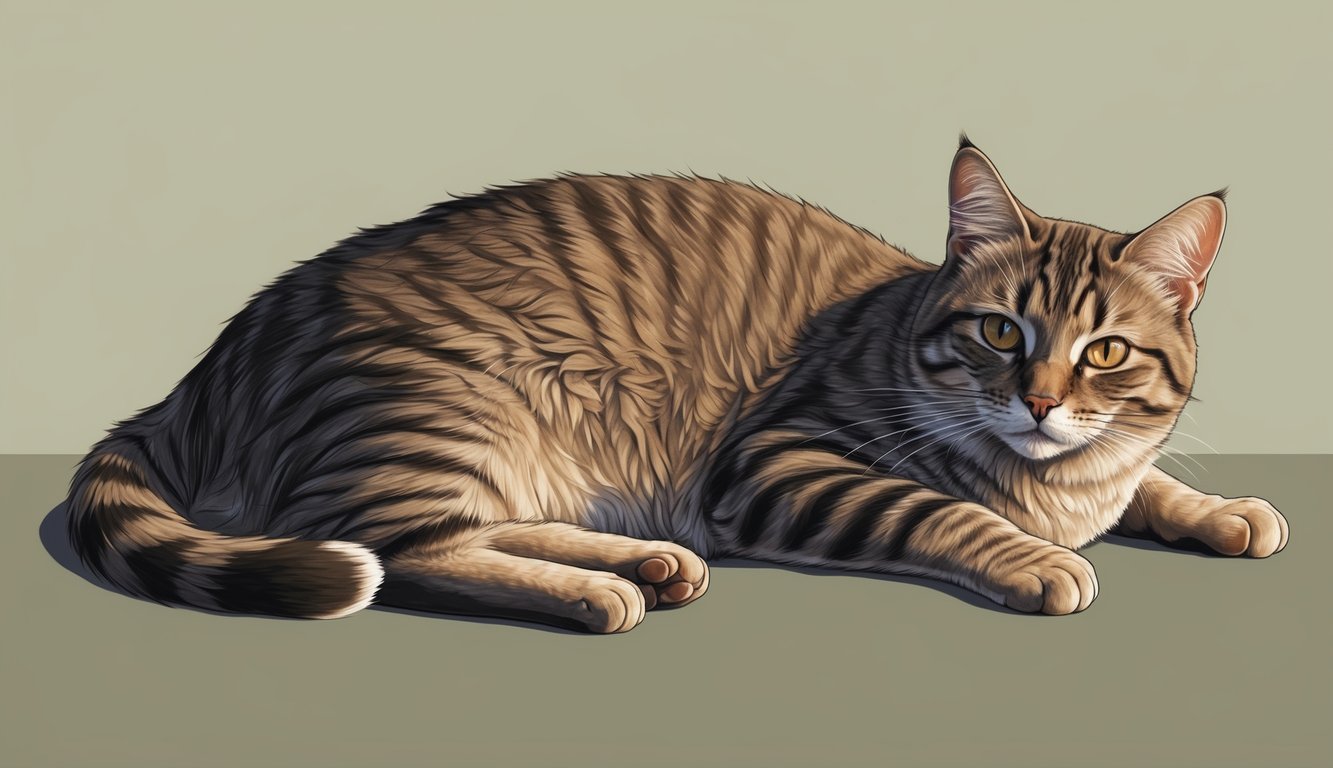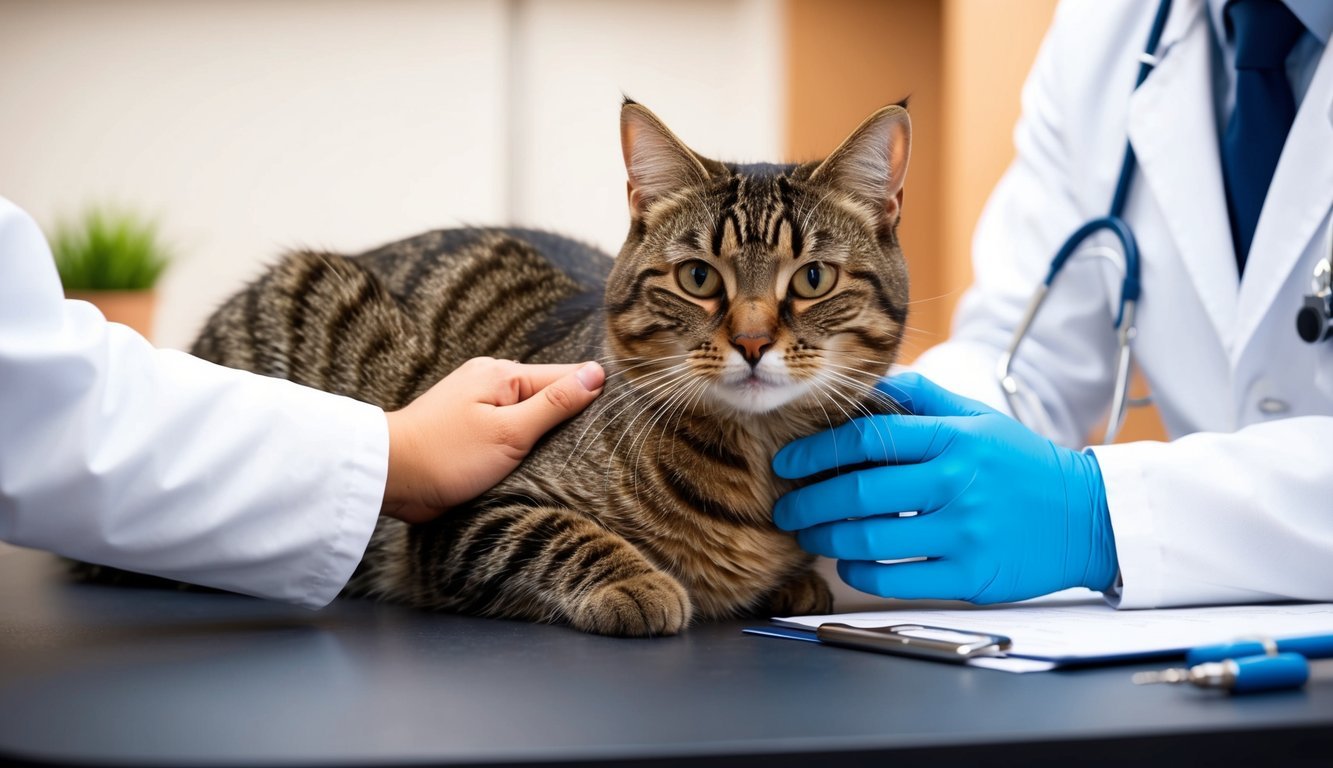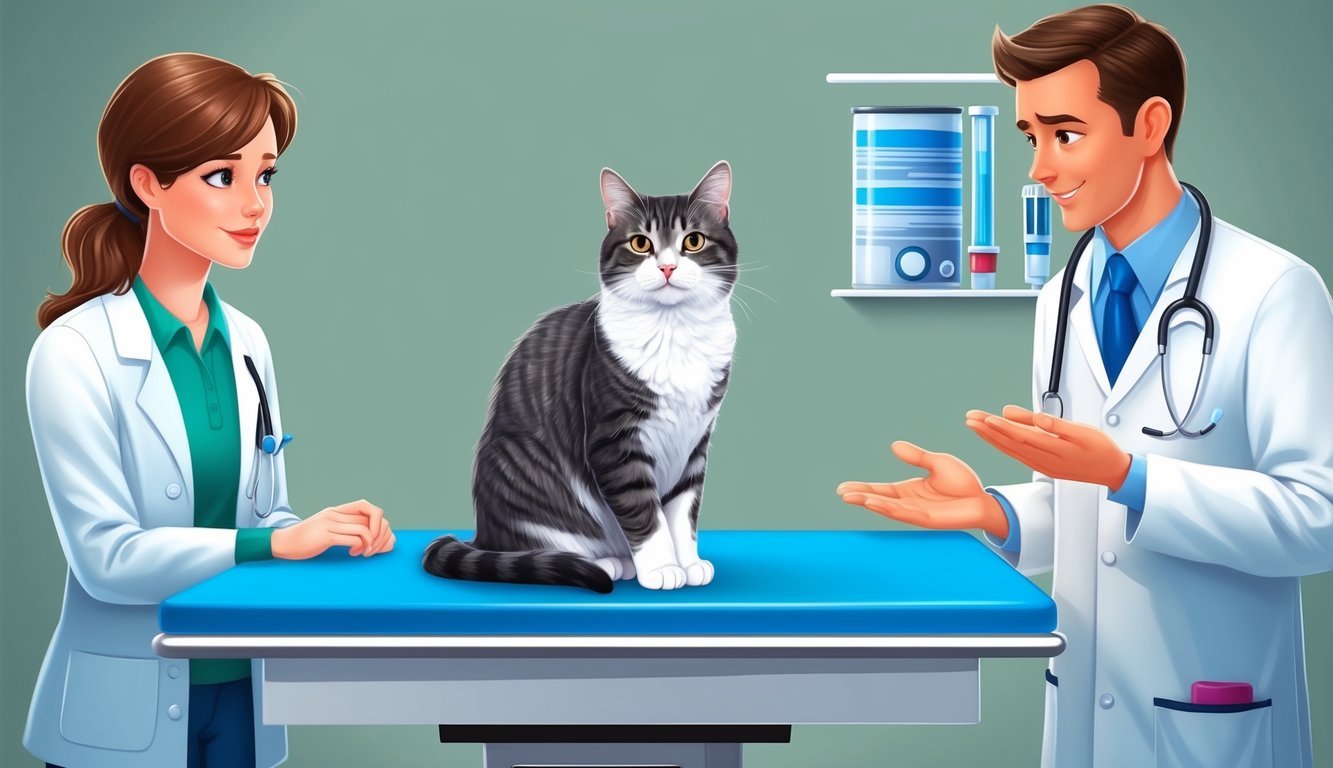Pancreatic cancer is a serious and often overlooked condition that can significantly affect your feline friend’s health. Recognizing the signs and understanding the risks associated with pancreatic cancer can make a crucial difference in your cat’s quality of life. While this type of cancer is relatively rare in cats compared to dogs, it is usually aggressive and can present unique challenges for diagnosis and treatment.
You may notice subtle symptoms initially, such as changes in appetite or lethargy, which could easily be dismissed as signs of aging or other minor ailments.
It’s vital to pay attention to these changes; being informed about pancreatic cancer can empower you to take action sooner rather than later.
Being proactive about your cat’s health and learning about this condition is essential.
Early detection can play a significant role in managing symptoms and improving outcomes, ensuring your beloved pet receives the best care possible.
Key Takeaways
- Recognizing early signs is key to timely intervention.
- Treatment options vary, and a tailored approach is essential.
- Supporting your cat through cancer care can improve their quality of life.
Understanding Pancreatic Cancer in Cats
Pancreatic cancer in cats is a complex condition that can significantly impact their health.
This section covers the nature of pancreatic cancer, the functions of the pancreas, and the types of tumors that can arise in this organ.
What is Pancreatic Cancer?
Pancreatic cancer occurs when abnormal cell growth starts in the pancreas.
This can lead to two main types of tumors: exocrine tumors and endocrine tumors.
Exocrine tumors originate from exocrine cells, which produce digestive enzymes.
The most common exocrine tumor in cats is pancreatic adenocarcinoma, known for its aggressive behavior. Endocrine tumors, on the other hand, develop from endocrine cells that produce hormones like insulin.
While less common, these tumors can still pose serious health risks.
The Feline Pancreas and Its Function
The pancreas plays a vital role in a cat’s digestive and metabolic processes.
It has two main functions: the production of digestive enzymes and the regulation of blood sugar levels.
The exocrine pancreas produces enzymes that help break down fats, proteins, and carbohydrates in the food.
Meanwhile, the endocrine pancreas releases hormones, including insulin, which is essential for glucose metabolism.
Any disruptions in these functions from cancer can lead to significant health issues, affecting everything from digestion to energy levels.
Types of Pancreatic Tumors in Cats
There are several types of pancreatic tumors that can affect your cat.
- Adenocarcinomas are the most prevalent and aggressive form of pancreatic cancer.
- Pancreatic adenomas are benign but can still create problems if they grow larger.
Both types arise from the exocrine portion of the pancreas, but malignant pancreatic tumors are more concerning due to their potential to spread rapidly.
Though pancreatic tumors are rare in cats, understanding their nature and effects is crucial.
Observing symptoms like weight loss, vomiting, or jaundice is essential for early detection and intervention.
Signs and Symptoms of Pancreatic Cancer

Recognizing the signs and symptoms of pancreatic cancer in cats is crucial for early intervention.
The following subsections outline the common clinical signs, gastrointestinal disturbances, and systemic impacts you may observe in affected cats.
Common Clinical Signs
You might notice several key clinical signs that indicate pancreatic cancer in your cat.
These include weight loss, which can occur despite a seemingly normal appetite, and a marked loss of appetite (or anorexia).
Your cat might also exhibit lethargy, becoming less active than usual.
Hair loss may occur due to nutritional deficiencies, while weakness can make it difficult for your pet to engage in daily activities.
Some cats may show signs of jaundice, which is characterized by yellowing of the skin and eyes, and could indicate underlying liver involvement.
If your cat exhibits any of these signs, it’s essential to seek veterinary care for a full evaluation.
Gastrointestinal Disturbances
Gastrointestinal issues are prevalent in cats with pancreatic cancer.
You might observe vomiting and diarrhea, which can be chronic or intermittent.
These symptoms can lead to dehydration, further complicating your cat’s health.
Abdominal pain is another concern; your cat may display discomfort when you touch its belly or may adopt unusual positions to alleviate pain.
Changes in thirst—either increased or decreased—are also common.
It’s important to monitor these signs closely, as they can significantly affect your cat’s quality of life.
Systemic Impacts of the Disease
Pancreatic cancer can have widespread effects on your cat’s overall health.
As the disease progresses, it may lead to a fever, signaling an underlying inflammatory process or infection.
The excessive secretion of insulin, particularly with insulinomas, may cause hypoglycemia, leading to additional symptoms like disorientation or seizures.
Weakness and a lack of energy could also be signs that your cat is not absorbing nutrients effectively.
This ongoing systemic impact can severely affect your cat’s well-being.
Pay close attention to these signs, as they may indicate the need for prompt veterinary intervention.
Diagnosis of Pancreatic Cancer
Diagnosing pancreatic cancer in cats involves a combination of initial assessments and advanced techniques.
Understanding the steps your veterinarian may take can help you navigate the process effectively.
Initial Veterinary Assessment
The first step usually involves a thorough physical examination and a review of your cat’s medical history.
Your veterinarian will check for common symptoms like vomiting, weight loss, or changes in appetite.
They will also ask you about any behavioral changes you’ve noticed.
Based on this assessment, the vet may suggest further tests.
Bloodwork is typically the next step, including a complete blood count (CBC) and chemistry profile.
These tests assess the overall health of your cat and can indicate potential issues with the pancreas.
Advanced Diagnostic Techniques
If initial tests suggest pancreatic cancer, your veterinarian may recommend more advanced diagnostic techniques.
Ultrasonography (ultrasound) is valuable for visualizing the pancreas and surrounding organs.
It can help detect tumors or fluid build-up in the abdomen.
Other imaging methods include CT scans and abdominal radiographs.
These techniques provide detailed views to evaluate the extent of the disease.
In some cases, a biopsy may be necessary to confirm the diagnosis.
This involves taking a tissue sample from the pancreas for examination under a microscope.
The results of these tests are crucial for developing a treatment plan.
Interpreting Test Results
Understanding test results can be critical in making informed decisions about your cat’s health.
Elevated white blood cell counts may indicate inflammation or infection, while low potassium levels can suggest issues related to pancreatic function.
Elevated bilirubin could also be a sign of bile duct obstruction due to tumors.
Discuss these results with your veterinarian to grasp what they mean for your cat’s condition.
Treatment options will typically rely on test results, guiding the choice between surgery, chemotherapy, or palliative care.
Clear communication with your vet helps ensure all your concerns are addressed, leading to more effective management of your pet’s condition.
Treatment and Management
Managing pancreatic cancer in cats involves several strategies tailored to the individual’s condition.
Treatment can include surgical options, chemotherapy, radiation, and supportive care.
The approach you choose will depend on factors like your cat’s overall health and the cancer’s stage.
Surgical Interventions
Surgery can be an effective option if the tumor has not spread extensively.
Your veterinarian may recommend a partial pancreatectomy to remove the tumor and surrounding tissue.
This procedure can alleviate some symptoms and improve your cat’s quality of life if done early enough.
However, surgery may not be suitable for all patients, especially if there is widespread metastasis.
In those cases, surgical options may be limited.
Discussing the potential risks and benefits with your vet is essential to make an informed decision.
Chemotherapy and Radiation
Chemotherapy is sometimes used to treat pancreatic cancer in cats, particularly in cases involving adenocarcinoma.
Certain drugs can help slow tumor growth and manage symptoms.
While responses can vary, common options include doxorubicin and chlorambucil.
Radiation therapy can also be beneficial, especially for managing local tumors.
Combining these treatments often yields the best results, but careful monitoring is necessary to mitigate side effects.
Regular veterinary check-ups ensure that your cat responds well to these interventions.
Supportive Care and Pain Management
Managing your cat’s comfort is crucial.
Pain management options, such as non-steroidal anti-inflammatory drugs (NSAIDs) or opioids, can improve their quality of life.
You may also need to adjust their diet if they experience exocrine pancreatic insufficiency, leading to malabsorption of nutrients.
Maintaining proper hydration and nutritional support is vital.
Providing easy-to-digest foods can help manage gastrointestinal symptoms.
Regular veterinary follow-ups will help you tailor a supportive care plan that meets your cat’s evolving needs throughout their treatment journey.
Prognosis and Life Expectancy

When it comes to pancreatic cancer in cats, the prognosis can vary widely.
For many cats diagnosed with pancreatic adenocarcinomas, the outcomes are often not favorable.
These tumors tend to be malignant and can grow rapidly.
Most cats with this type of cancer have already experienced metastasis by the time of diagnosis.
This means the cancer has spread to other organs, complicating treatment options and reducing survival rates.
Life Expectancy
- Adenocarcinoma: If your cat is diagnosed with this malignant tumor, the life expectancy can be short, often measured in months.
- Treatment Options: Some cats may undergo surgery, chemotherapy, or other interventions, but responses can vary.
- Survival Rates: A small percentage may achieve longer survival with aggressive treatment. In some reported cases, cats lived for over a year after surgical resection.
It’s crucial to discuss your cat’s specific situation with your veterinarian.
They can provide insights based on your pet’s health and treatment options.
Regular monitoring and supportive care also play essential roles in managing your cat’s condition.
Supporting Your Cat

Supporting your cat with pancreatic cancer involves a focus on nutrition and creating a comfortable living space.
These elements contribute greatly to your cat’s well-being during treatment and recovery.
Nutritional Considerations
Nutrition is crucial for your cat’s health.
Cats with pancreatic cancer may experience changes in appetite, necessitating adjustments to their diet.
Consult your veterinarian or a veterinary oncologist for tailored dietary advice.
Consider these dietary tips:
- High-Quality Protein: Opt for easily digestible protein sources. Options like chicken or fish might be more appealing.
- Small, Frequent Meals: Offer smaller portions throughout the day to manage appetite fluctuations.
- Hydration is Key: Ensure constant access to fresh water. Dehydration can worsen symptoms.
If your cat is diagnosed with diabetes due to pancreatic issues, work with your vet to monitor insulin and glucagon levels.
Special diets designed for diabetic cats may be necessary.
Creating a Comfortable Environment
Creating a serene, comfortable space for your cat is essential.
Stress can aggravate their condition.
Here are some simple ways to enhance their environment:
- Quiet Spaces: Designate a calm, quiet area for your cat to retreat. This can be a cozy bed in a less trafficked part of your home.
- Maintain Routine: Keep feeding and care routines consistent. Familiarity can provide comfort during stressful times.
- Engaging Activities: Offer gentle playtime or interactive toys to maintain mental stimulation without overexertion.
Regular veterinary care is important.
Monitor for any changes in behavior or health and consult your vet promptly.
Making these small adjustments can significantly enhance your cat’s quality of life.
Prevention and Early Detection

Preventing pancreatic cancer in cats can be challenging, but being proactive helps.
While the exact causes remain mostly unknown, certain factors may increase the risk:
- Age: Older cats (over 8 years) are more prone to pancreatic issues.
- Genetics: Some breeds might be more susceptible.
- Diet: Poor nutrition can contribute to pancreatic problems.
To enhance early detection, keep an eye out for changes in your cat’s behavior and health.
Key signs to watch for include:
- Loss of appetite: A sudden drop in food intake can be concerning.
- Weight loss: Unexplained weight loss, despite normal eating, is a red flag.
- Lethargy: If your cat seems unusually tired or inactive, take note.
Regular veterinary check-ups are crucial.
Ask about routine blood tests and urinalysis, which can provide insights into your cat’s overall health and detect potential issues early.
Additionally, maintaining a healthy lifestyle for your cat can make a significant difference.
Ensure they have a balanced diet and regular exercise to support their overall well-being.
If you observe any of the early symptoms mentioned, consult your vet promptly.
Early intervention can help manage health issues more effectively and improve your cat’s quality of life.
Frequently Asked Questions

When it comes to pancreatic cancer in cats, you may have several questions.
Understanding the signs, life expectancy, treatment options, and more can help you make informed decisions about your cat’s health.
What are the signs of pancreatic cancer in our feline friends?
You might notice changes in your cat’s appetite, such as eating less or being unusually hungry.
Other signs include vomiting, lethargy, and behavioral changes like hiding.
Abdominal pain or discomfort is also common.
If the cancer has progressed, symptoms might include weight loss, labored breathing, or even yellowing of the skin and eyes.
Can you tell me about the life expectancy for cats diagnosed with pancreatic cancer?
The life expectancy for cats diagnosed with pancreatic cancer can vary significantly.
Unfortunately, many cats are diagnosed at an advanced stage, which often leads to a shorter lifespan.
On average, affected cats may live only a few months after diagnosis, but this can depend on individual circumstances, including their overall health and treatment choices.
What treatment options are available for cats with pancreatic cancer?
Treatment options can include surgery, chemotherapy, or supportive care.
Surgery may be possible in some cases to remove the tumor, but it isn’t always an option.
Chemotherapy might help slow the progression of the disease.
Your veterinarian can help determine the best approach based on your cat’s specific situation.
How common or rare is pancreatic cancer in the cat population?
Pancreatic cancer is considered rare in cats.
While it does occur, it is not as common as some other types of cancer seen in felines.
When it does happen, it often involves older cats, typically those over eight years of age.
What factors contribute to the development of pancreatic cancer in cats?
The exact cause of pancreatic cancer in cats is not well understood.
Some factors may include age, genetics, and possibly environmental influences.
Dietary factors and other underlying health conditions may also play a role, although definitive links are still being studied.
At what point should a cat with pancreatic cancer be humanely euthanized?
Deciding on humane euthanasia is a deeply personal decision for pet owners.
It’s essential to consider your cat’s quality of life.
If your cat is suffering, in pain, or unable to enjoy normal activities, it may be time to consult with your veterinarian about this difficult choice.
They can help guide you through the process.

